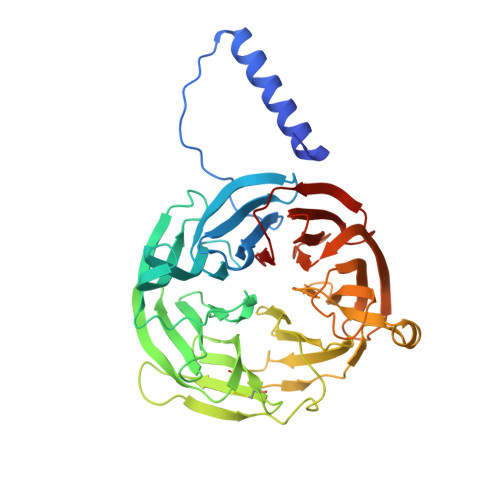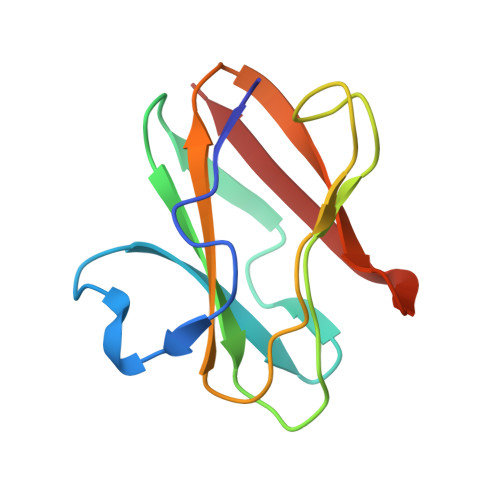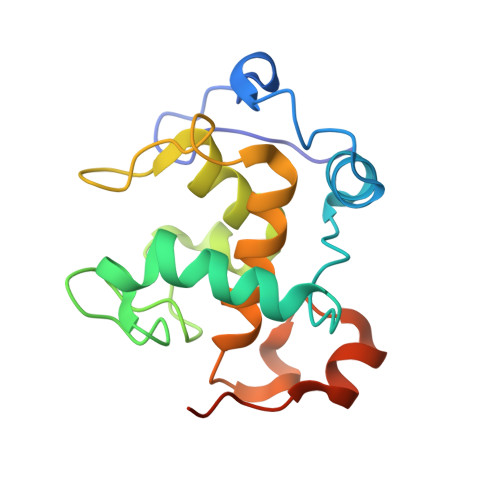MUTATION OF AlPHA PHE55 OF METHYLAMINE DEHYDROGENASE ALTERS THE REORGANIZATION ENERGY AND ELECTRONIC COUPLING FOR ITS ELECTRON TRANSFER REACTION WITH AMICYANIN
Sun, D., Chen, Z.W., Mathews, F.S., Davidson, V.L.(2002) Biochemistry 41: 13926-13933
- PubMed: 12437349
- DOI: https://doi.org/10.1021/bi026654x
- Primary Citation of Related Structures:
1MG2, 1MG3 - PubMed Abstract:
Methylamine dehydrogenase (MADH) possesses an alpha(2)beta(2) structure with each smaller beta subunit possessing a tryptophan tryptophylquinone (TTQ) prosthetic group. Phe55 of the alpha subunit is located where the substrate channel from the enzyme surface opens into the active site. Site-directed mutagenesis of alphaPhe55 has revealed roles for this residue in determining substrate specificity and binding monovalent cations at the active site. It is now shown that the alphaF55A mutation also increases the rate of the true electron transfer (ET) reaction from O-quinol MADH to amicyanin. The reorganization energy associated with the ET reaction is decreased from 2.3 to 1.8 eV. The electronic coupling associated with the ET reaction is decreased from 12 to 3 cm(-1). The crystal structure of alphaF55A MADH in complex with its electron acceptors, amicyanin and cytochrome c-551i, has been determined. Little difference in the overall structure is seen, relative to the native complex; however, there are significant changes in the solvent content of the active site and substrate channel. The crystal structure of alphaF55A MADH has also been determined with phenylhydrazine covalently bound to TTQ in the active site. Phenylhydrazine binding significantly perturbs the orientation of the TTQ rings relative to each other. The ET results are discussed in the context of the new and old crystal structures of the native and mutant enzymes.
Organizational Affiliation:
Department of Biochemistry, The University of Mississippi Medical Center, Jackson, Mississippi 39216-4505, USA.






















